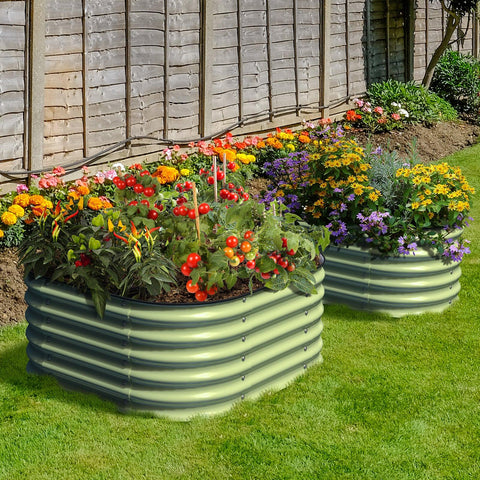Knowledge from Olle Garden Bed: When To Pick Winter Vegetables
If you live in a warm climate, it doesn't seem like a big deal to harvest vegetables in winter. However, for gardeners in cold climates, planting winter crops is a dream come true. By using cold frames and tunnels, you can harvest in winter even if you live in an area where the winter temperature is below freezing and snow covers. The following content also has some reference value for raised garden beds.
Planting winter harvest plants
The key to winter harvesting is to choose cold season crops, plant them at the right time, and choose the right season extender according to your climate. Some crops, such as brussels sprouts, can be planted in late summer and have a longer harvest period in high tunnels.
Low tunnels and cold frames can provide adequate protection in mild climates for harvesting in winter, or they can be used to extend the harvest season in cold climates. In cold weather, low tunnels can be covered with polyethylene film to help maintain heat.

When to pick winter vegetables
Preventing freezing temperatures is not the only problem facing gardeners who want to grow winter crops. The reduction of sunshine time in winter will slow down or stop the growth of plants. In order to harvest vegetables successfully in winter, most crops need to reach or approach the maturity date when the sunshine time drops to 10 hours or less per day.
The days with sunshine duration no more than ten hours are called Persephone period. Gardeners can use the Persephone period in their region to determine when to pick winter vegetables. Then calculate the planting time by counting the days and weeks of the reciprocal harvest date.
Planned vegetable harvest in winter
Here's how to calculate the planting and harvesting dates of winter crops in your area:
- First determine your Persephone period. You can do this by looking for sunrise and sunset dates in your area. The Persephone period began with the decline of the day length from autumn to ten hours, and ended with the recovery of the day length to ten hours a day at the end of winter.
- Decide when to pick winter vegetables according to the Persephone period. Ideally, your crop will be close to or at the maturity date at the beginning of the Persephone period. Cool temperature and low sunshine time will make many crops semi dormant. This can extend the harvest time of the whole Persephone period. (Once the sunlight recovers to more than ten hours a day, crops in the cool season are prone to bolt blockage.
- Use the ripening days of the required crops, counting backwards from the Persephone period. (You may want to add two weeks to cope with slower growth in autumn. This calendar date marks the last safe planting day for successful winter vegetable harvesting.

Best winter crop
To harvest in winter, try planting one or more of these cold season vegetables in tunnels or cold racks:
Sesame
Green vegetable
Cabbage
Chinese cabbage
Carrot
Kale
Garlic
Cabbage
a turnip
Leek
romaine lettuce
pulp
onion
Parsnip
peas
potato
radish
Scallion
Spinach
